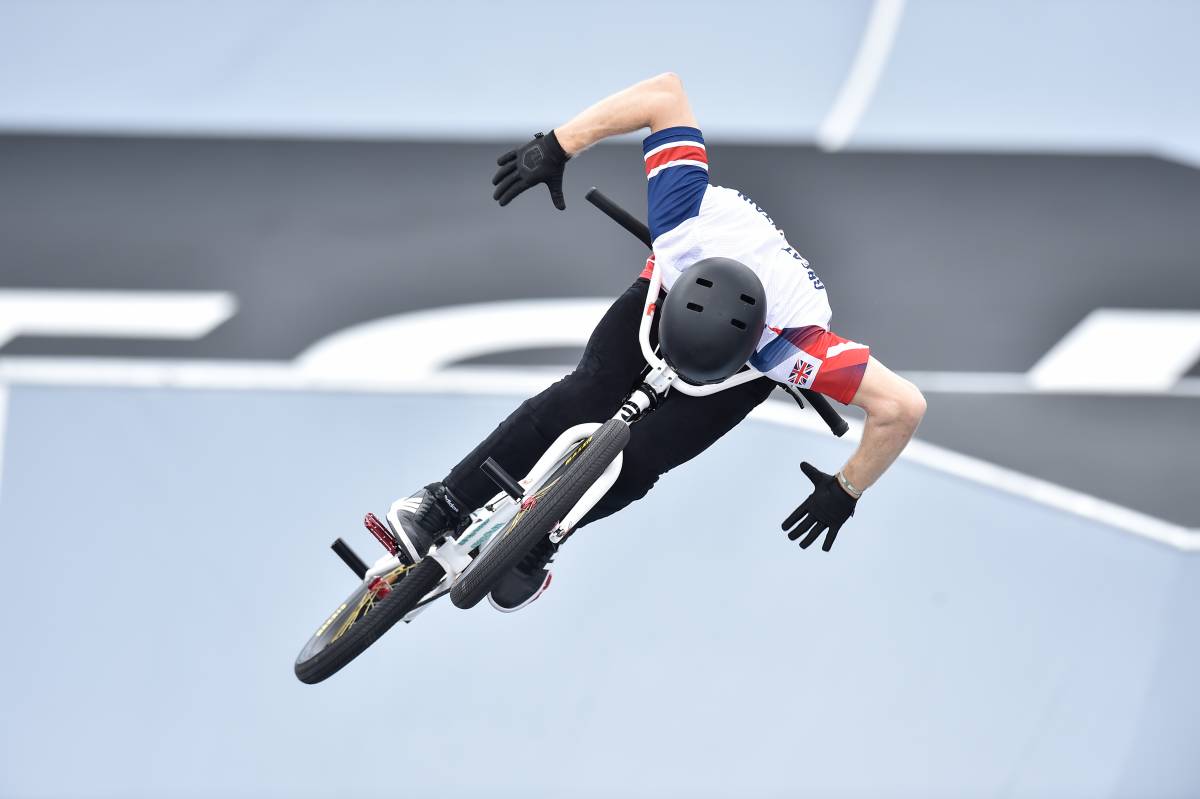Researchers link some 'new' sports to worst athlete injury rates at 2020 Tokyo Olympics: BJSM paper
‘Newer’ additions such BMX freestyle, karate and skateboarding were associated with some of the highest injury rates at the 2020 Tokyo Olympics, according to a study published online in the British Journal of Sports Medicine.
A number of new sports and disciplines appeared for the first time at the Tokyo 2020 Summer Olympics – baseball/softball, karate, skateboarding, sport climbing, surfing, 3×3 basketball and BMX freestyle.
Despite some concerns, the overall injury rate recorded among all sports and disciplines was at a comparable level with previous Olympics, while the illness rate was lower.
The International Olympic Committee (IOC) has audited sports injuries and illnesses in every Olympic Games since Beijing 2008, with the aim of safeguarding athlete health.

One in 10 'injured'
IOC researchers recorded the daily number of athlete injuries and illnesses reported by national medical teams and medical staff in the designated health clinics during the Tokyo Games, which ran from 23 July to 8 August 2021. Some 11,315 athletes (5,423 women and 5,892 men) from 206 national teams were actively monitored for injury and illness.
In all, national medical team and health clinic clinicians reported a total of 1,035 injuries and 438 illnesses among these competitors – equivalent to about nine injuries and four illnesses per 100 athletes in all sports and disciplines over the 17-day period.
Altogether, nearly one in 10 (9 per cent) of the athletes sustained at least one injury and nearly one in 20 (4 per cent) across all sports and disciplines had at least one illness. But rates of injury and sickness varied considerably among sports.
Boxers and BMX racers sustained the highest number of injuries (27 per cent), while the lowest numbers occurred in diving, road cycling, rowing, marathon swimming, and shooting (1-2 per cent).
Some of the highest injury rates were in newly introduced sports and disciplines: BMX freestyle (22 per cent); skateboarding (21 per cent); and karate (19 per cent). Handball, an existing sport, was also associated with a relatively high number of injuries (18 per cent).
The equivalent figures for the other newly introduced sports were 15 per cent for sport climbing, 13 per cent for surfing, 11 per cent for 3×3 basketball, and 8 per cent for baseball/softball.
More than half of all injuries (58 per cent) were sustained in competition, a third (34 per cent) during training, and 7 per cent during warm up or cool down. Cuts and bruises, muscle and ligament strains were the most common types of injury.
Similar injury rates for men and women
When taking into consideration sport, age, and team size, there was no difference in overall injury rate between women and men, although women in artistic gymnastics were more than three times as likely to be injured as men. As for illness, the highest rates occurred among marathon and artistic swimmers (both 8 per cent), followed by skateboarding and karate (both 7 per cent).
During the 17 days of the Games, 18 athletes – less than 0.2 per cent of the total – caught Covid-19, accounting for 4 per cent of all illness. Exertional heat stroke affected 78 athletes, accounting for 18 per cent of all illness and nearly 1 per cent of all athletes, but most (88 per cent) of these illness bouts did not require time off from competition/training.
Conclusion
[The relatively low sickness rate] might largely be attributed to the extensive countermeasures put in place to mitigate Covid-19, effectively reducing transmission of Covid-19 and all respiratory infections [Torbjørn Soligard et al]
The BJSM paper was written by a team led by Torbjørn Soligard, who is based at the Medical and Scientific Department of the International Olympic Committee in Lausanne, Switzerland.
The injury rate in the Tokyo Olympics (9 per cent) was comparable with those of the Summer Games of Beijing 2008 (10 per cent), London 2012 (11 per cent), and Rio 2016 (8 per cent). The sickness rate was lower, however.
‘This might largely be attributed to the extensive countermeasures put in place to mitigate Covid-19, effectively reducing transmission of Covid-19 and all respiratory infections,’ Dr Soligard and his colleagues suggest.
The combination of the heat, humidity, and Covid-19 posed a considerable challenge for competitors, support staff, and organisers. But comprehensive measures, including infection control, cooling and hydration strategies helped minimise the impact on health, they add.
To see the full version of the article, titledNew sports, COVID-19 and the heat: sports injuries and illnesses in the Tokyo 2020 Summer Olympics doi:10.1136/bjsports-2022-106155, visit: https://bjsm.bmj.com/lookup/doi/10.1136/bjsports-2022-106155
Author: Ian A McMillanShare it with














